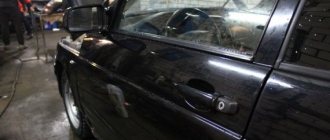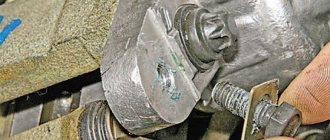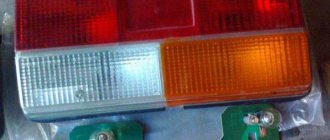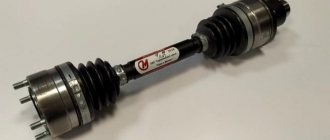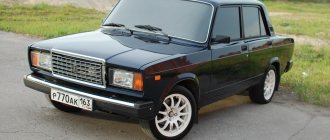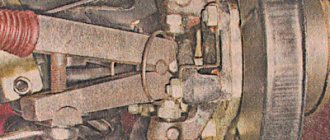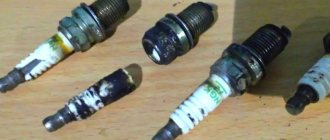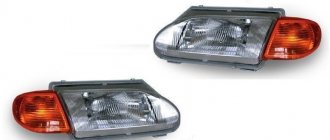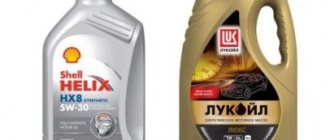When planning to update or change brakes, which brake drums are better, cast iron or aluminum, each car owner decides for himself.
First of all, I would like the brake system to work like a Swiss watch - it guarantees both the life and health of the owner of the car and his passengers. And secondly: I don’t want to change the drums again. The matter, of course, is not too complicated, and is accessible to anyone who can hit the right place with a sledgehammer, and not the finger. However, this, especially if the spare parts are stuck, is long, dirty and physically expensive. So it’s better to buy spare parts that will not require replacement at least for a certain period of time. And the reliability of these parts may depend on various factors, including the manufacturer and the material from which they are made.
Which brake drums are better – cast iron or aluminum – you can’t say right away. Both have their advantages, but there are also certain disadvantages. Before deciding to purchase, it is worth finding out the balance of pros and cons in each case. But in any case, there will always be fans of both.
Aluminum
It would seem that a more modern and advanced material should have become a very successful competitor to traditional cast iron. Its undoubted advantages include:
- Price
. Nobody likes to overpay, and our people in particular. Aluminum drums cost about 2 times cheaper; - Weight
. The global auto industry is trying its best to reduce axle loads, and lightweight drums contribute greatly to this; - complete absence of corrosion
, with which all motorists constantly fight hard (and quite often lose); - rapid cooling
. Aluminum drums cool down much faster than cast iron ones.
However, everyone still has doubts when choosing. And they have a basis. Moreover, car owners have much more objections than arguments in favor.
- Low wear resistance
. You will have to change the drums quite often, which, in fact, you would like to avoid in the first place; - Intolerance to temperature changes. So if, for example, you drive into a puddle on hot drums, expect problems;
- Aluminum drums stick tightly. To remove them, in most cases you won’t be able to use a regular sledgehammer. And you will have to change it often (see point 1), that is, the problem increases exponentially.
- Aluminum does not hold geometry well - the metal is still soft. So they will have to be edited regularly, which makes no one happy.
But the worst thing is the very limited choice of manufacturers and the huge percentage of defective products. People who fell for the price and ease happened to return substandard items back to the sellers with corresponding unflattering reviews. There is an opinion among drivers that if high-quality (read: imported) aluminum were available, they would put up with some of its shortcomings.
Criterias of choice
Tips on what to look for when choosing:
- Material. If you plan to lighten the weight of the car and the load on the rear axle, then choose an aluminum drum, but if you need durability and reliability, opt for the cast iron option.
- Which company is better? When choosing, the model and make of the car are important; brake drums from domestic and foreign companies have the same functionality, so when choosing which one is best to buy, focus on your needs and capabilities.
- What is the price. Cost will vary depending on brand recognition, delivery and material of manufacture. On average, the price range ranges from 500 rubles to 8,500 rubles. Budget models will be less durable and more efficient, but you shouldn’t overpay just for the brand either.
- Reliability. Be sure to check the compliance of the purchased product with international quality standards. Regardless of where you purchase, ask the seller for all the necessary documents and certificates. It is also important that all products pass all necessary tests for balancing, weight, geometry, static stiffness, heating behavior, etc. Your health and your life depend on the reliability and efficiency of the system.
- Original. Try to purchase original spare parts for your car; cheap counterfeits (analogs) may not fit the technical parameters, or have low performance, and may not do the job, then you will overpay for a repeat purchase.
Cast iron
The disadvantages of this material are directly opposite to the advantages of aluminum. That is, cast iron drums are heavy, expensive and rust, so they need to be painted and treated with anti-rust. However, their reliability is beyond praise: they are temperature stable (the handbrake does not stick even in deadly frosts), they do not creak, something that aluminum often suffers from, their geometry is correct from the moment of purchase and does not require adjustments throughout their service life. True, you will need to buy stronger pads for them - soft ones will quickly wear out.
Another advantage is that they practically do not stick.
: Cast iron drums that have been in service for years often do not even require the use of a sledgehammer.
As for going overboard with weight, this argument is somewhat dubious: in aluminum drums, the working surface is also filled with cast iron, that is, the gain in lightness is not so great.
An additional bonus is the ability to choose a manufacturer: cast iron drums are produced by many firms and companies.
The best brake drum manufacturers
The top manufacturers of the highest quality brake drums are based solely on the experience and reviews of car owners.
ZEKKERT
Description. The young Chinese company ZEKKERT produces automobile filters, elements of brake and steering systems, as well as drives, hinges and supports. The concern's spare parts are characterized by a good price/quality ratio.
The company's central office is located in Germany, in the city of Munich. Production facilities are located in China. The brand not only produces, but also packages spare parts from other concerns. Over 8,000 product items are supplied to the European automotive market.
All products comply with ISO/TS 16949 quality standards.
The components are tested in special centers.
ZEKKERT drums have an excellent appearance. The manufacturer does not spare lubrication, so the product packed in the bag almost floats in oil.
The components are made of iron and painted black. The manufacturer places special emphasis on reducing the weight of the drums without sacrificing the quality of the alloy. The metal undergoes microstructure control and testing for strength and hardness.
During operation, the brake elements do not emit extraneous noise, as they have precise geometric dimensions. ZEKKERT's arsenal includes brake drums for Skoda, Volswagen, Mazda and other common brands.
Life time. ZEKKERT provides a warranty for 2 years from the date of installation of the part. The company is ready to replace defective spare parts with others. The service life of the drums is 100,000-120,000 km.
Pros of ZEKKERT
- Affordable price.
- Good appearance.
- Long service life.
Cons of ZEKKERT
- There are deformed parts.
AUTOREAL
Description. Car owners note the high quality of components. During operation, the drums do not knock, and braking remains uniform. The manufacturer has worked hard to reduce the braking distance by 10%.
Russian brake drums meet technical requirements. The material used to manufacture the parts is SCh-25 cast iron.
It is worth mentioning that AUTOREAL is the first company in Russia to produce relatively lightweight cast iron drums for the rear brake. The production uses advanced casting and machining technologies to produce parts of precise dimensions without the need for additional balancing. The components are light in weight.
Solid parts last longer due to the absence of inserts that fall off in high temperatures. The cast iron component does not deform during sudden braking.
Life time. The regulated service life of AUTOREAL drums is 120,000 km. The components are installed on domestic VAZ and GAZ models, as well as on Chevrolet, Daewoo and others.
Pros of AUTOREAL
- No vibrations.
- Uninterrupted operation over tens of thousands of kilometers.
- Resistance to deformation.
Cons of AUTOREAL
- Heavy weight compared to aluminum counterparts.
PILENGA
Description. Its history began back in 1947. Today the concern supplies brake discs and drums to the assembly lines of large automobile factories in the USA (Harley Davids, Chrysler) and Europe.
The company's production facilities are located not only in Italy and Japan, but also in other countries in Europe, Asia, and America.
All products comply with ISO 9000-4 quality certificate.
35% of all components supplied to the market are discs and drums, and 65% are blanks for cylinders, clutch elements, pins and racks. The quality of spare parts is controlled by the head office and independent agencies.
The company's own research and development center is constantly working on the development of optimal alloys of ferrous and non-ferrous metals.
During the production process, a unique computer program is used to control steel cooking, recording the slightest deviations from the given recipe.
The components are made of cast iron steel. High quality alloy and precise geometry allow the part to be used in any weather. At the same time, the driver will not hear any grinding or extraneous noise.
Life time. PILENGA drums are sold individually or in pairs. The service life is 5 years.
Pros of PILENGA
- No vibrations.
- High-quality braking.
- Great resource.
Cons of PILENGA
- Subject to corrosion.
TRW
Description. Brake drums from TRW Aftermarket cover 46.6% of the European automotive market. The manufacturer has over 350 modifications in its arsenal, represented by options with built-in bearings and bimetallic structures.
TRW components are valued for their high stopping power, sufficient braking torque reserve and predictable behavior under extreme loads.
One of the company's newest developments is the Simplex series of drums. It is aimed at quieter and smoother operation of the braking system. The components are absolutely silent. These parts are installed on FORD Focus and FORD Fiesta cars.
Bimetallic modifications are made of cast iron and steel. Such structures are resistant to deformation at high temperatures.
High-strength spheroidal graphite cast iron is used for casting. It is noteworthy that graphite is given a spherical shape using magnesium. This increases the tensile strength of the material.
During operation, the part does not crack even during sudden braking.
The quality of the rear drums meets the standards of original spare parts from brands such as Renault, Ford and Mitsubishi. The TRW brake drum kit includes: lubricant, nut, retaining ring, installation instructions.
Life time. The resource of the element is 65,000 km.
Pros of TRW
- Good service life.
- No squeaks.
- Smooth braking in any weather.
Cons of TRW
- There are fakes.
AND THOSE
Description. The ATE brand is part of the large German company Continental Teves, one of the largest manufacturers of brake system elements.
The history of the concern began in 1921. The company has extensive experience in developing technologies and components for automobiles. Thanks to this, it supplies products to the assembly lines of such car factories as BMW, GM, Audi, Skoda, VW, Iveco, Ford.
German components have repeatedly taken part in motorsports. Over 80% of all manufactured products are supplied to the primary market.
The quality of ATE brake drums is at the same level as the original ones. The components are supplied to the assembly lines of well-known car factories.
The drums are made from high-strength cast iron. The company also released parts with a protective layer.
Now the brake element will not rust for a long time, and the technician will not have to process it before installation.
ATE drums can be purchased individually or as a set.
Life time. The regulated service life is 130,000 km.
Pros of ATE
- High-quality braking.
- Long service life.
- Anti-corrosion coating in some modifications.
Cons of ATE
- The cost is above average.
Results
But everyone has their own final opinion on which brake drums are better, cast iron or aluminum. Many believe that there is no difference at all, although 8 kilograms in weight and half the price somehow do not fit into the concept of no difference. Some people suggest not taking the cheapest aluminum - they say you won’t encounter most problems, but the average one is quite good for the price. And there are people who are sure that the choice between cast iron and aluminum is not necessary at all, since the coolest of all are disc drums, for which they need to save money.
Description
Brake drums were designed back in the 19th century. At the beginning of the 20th century, the design underwent significant changes. This device also functions as a hand brake. Drum brakes compare favorably with disc brakes not only in terms of savings in production, but also in greater efficiency and longer service life.
Design
The following elements are found inside:
- brake pads (each manufacturer has its own composition, they keep it secret);
- one or more hydraulic cylinders;
- protective disk;
- retainer;
- tension springs;
- hairpins;
- self-feeding mechanism;
- block spacer;
- pad supply mechanism.
Principle of operation
When you press the brake pedal, pressure occurs in the working fluid system. It acts on the piston of the brake cylinder, the latter element actuates the brake shoe, which is located on the sides and is in close contact with the drum. Accordingly, the speed of rotation of the part decreases and due to this the speed of the car decreases. Modern technologies provide the fastest possible braking, regardless of the condition of the road surface.
Pros:
- inexpensive to manufacture, much cheaper than disk options;
- the resource is 30-40% greater than that of disk drives;
- less often have to be changed.
Minuses:
- brakes worse compared to disc ones;
- become dirty inside.
